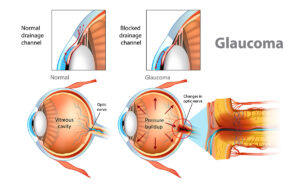How often do you find yourself squinting at your smartphone or spending hours staring at your computer screen? In our digital age, screens are virtually unavoidable, but their overuse can lead to significant eye health challenges. At Anaheim Eye Institute, we understand the impact of digital devices on your vision and overall eye health. In a world where digital screens predominate, this blog post will discuss practical ways to limit screen time and maintain healthy eyes.
Understanding the Impact of Screen Time on Eye Health
Extended exposure to digital screens can lead to a variety of eye problems, commonly referred to as digital eye strain or computer vision syndrome. Symptoms include dryness, irritation, blurred vision, and headaches. But what exactly causes these symptoms?
- Blue Light Exposure: Digital screens emit blue light, which can penetrate deeper into the eye and cause damage over time, potentially contributing to the risk of macular degeneration.
- Reduced Blinking: Focusing on screens significantly decreases the blink rate, leading to increased evaporation of the eye’s tear film, and resulting in dry eye syndrome.
Practical Tips for Reducing Screen Time and Eye Strain
To combat the effects of prolonged screen use, consider the following actionable tips:
- Adopt the 20-20-20 Rule: Every 20 minutes, take a 20-second break to look at something 20 feet away. This simple exercise helps reset your focus and reduces eye strain.
- Optimize Your Workspace: Adjust the brightness and contrast of your screen to comfortable levels to minimize glare. Position your screen so it is slightly below eye level and about an arm’s length away. Consider using a matte screen filter to reduce glare further.
- Manage Lighting: Ensure that the lighting in your work area is neither too bright nor too dim. Excessive contrast between your screen and the surrounding environment can strain your eyes.
Incorporating Regular Eye Care into Your Routine
Maintaining regular check-ups with an eye care professional is crucial, especially if you frequently use digital devices.
- Regular Eye Exams: Comprehensive eye exams can catch vision problems and eye conditions early, allowing for timely treatment. An eye doctor can also recommend personalized tips and specific eyewear designed to reduce digital eye strain.
- Eye-Friendly Lifestyle Choices: Incorporate eye health supplements and a diet rich in vitamins C and E, zinc, lutein, and omega-3 fatty acids to support good vision. Also, ensure you maintain adequate hydration to help mitigate dry eyes.
Conclusion
Screen time is an integral part of modern life, but it doesn’t have to compromise your eye health. By understanding the risks associated with prolonged digital device use and implementing strategies to mitigate these risks, you can protect your vision and maintain healthy eyes. Remember, the key to preventing eye strain and other related conditions is moderation and regular care. We encourage you to explore further articles on our blog at Anaheim Eye Institute for more insights into protecting your vision in the digital era.
FAQ’s
How often should I take breaks from screen time to prevent eye strain?
Implement the 20-20-20 rule as a guideline: every 20 minutes, take a break for at least 20 seconds by looking at something at least 20 feet away.
Can blue light glasses help reduce eye strain?
Yes, blue light glasses can filter out the blue light emitted by screens, potentially reducing eye strain and improving comfort during extended screen use.
What are the signs of digital eye strain?
Common signs include headaches, blurred vision, dry eyes, eye irritation, and increased sensitivity to light.
How does screen time affect children’s eye health?
Excessive screen time can lead to eye strain, headaches, and even myopia (nearsightedness) in children. It’s important to limit screen use and ensure they take regular breaks.




